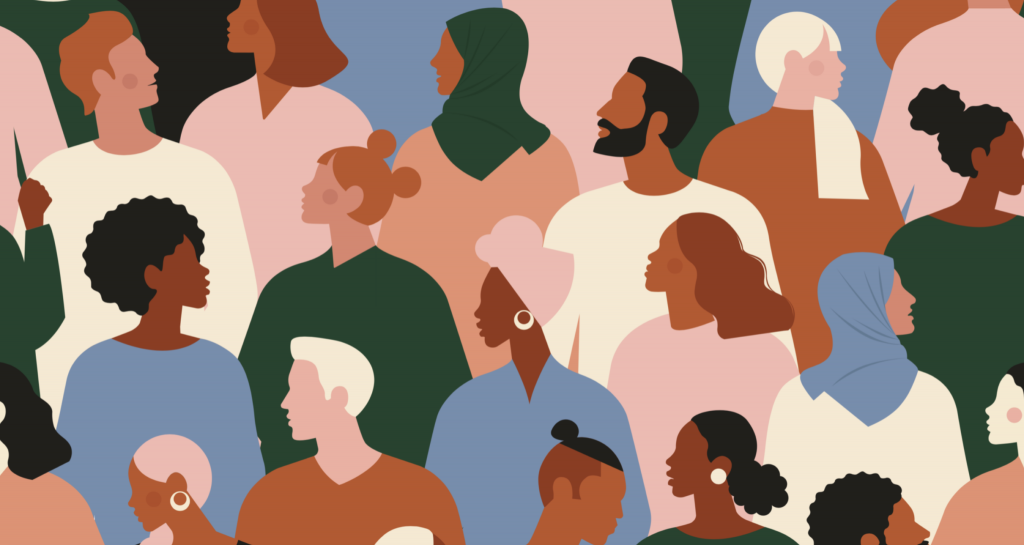With social interactions currently being redefined and groups coming to the fore, Younited proposes an examination of the major issues facing brands through the prism of brand evolutions and relationships.
‘Chosen families’, ‘gender evolution’ and ‘community membership’ 2020 was fertile ground for the blossoming and emergence of new concepts in the public sphere, and raises new questions around identities and the criteria used in its definition. Discover the new ways for brands to address these identity revolution!
1. Communicating with “multiple selves”
While brands continue their frantic race towards skin-deep ‘inclusiveness’, societies expect more than mere representations. Photographing different body types is no longer sufficient if the brand cannot deliver on its products and services. There are some brands such as the Cosmetics brand Fenty or the lingerie brand Third Love, that deliver with extensive product ranges, offering product adaptations for the greatest number.
You think the age old question of catering to everybody vs the majority is limited to large companies? Not necessarily. The new reality means we have to re-think our business models with: co-construction, opinion solicitation, pre-order models… whatever the size of the company there are many ways to cater to this demand.
Another strategy? Getting rid of or celebrating neutrality.

By removing gender, colours and special relationships we fire up our imaginations to no longer celebrate the concept of ‘unisex’ but ‘no gender’,
By creating Mémoire d’une Odeur, Gucci is plugging into the collective consciousness of perfume. The myth of gendered seduction and the quest for empowerment is left behind. In its place, a reminder of the olfactory properties of perfume and its ability to remind us of a person but also a time, a place, a memory….
By breaking free from the traditional “men / women” floors, the Galeries Lafayette on the Champs Élysées are redefining the shopping experience with an emphasis on brands and fashion rather than gender.
These are inspiring examples to re-evaluate the physical or digital shopping experience in terms of references, colours, shapes and even nomenclature.
The key words? ‘Decompartmentalize’ and ‘break down barriers’ without creating new diktats. That means letting people navigate in different universes that correspond to them at their life stage. It gives them freedom to express their own identities without be stigmatized by the exclusive nature of “no-gender”.
2. Re-learning how to live together
Thinking about this on an individual level reconfigures ideas of conviviality and belonging. How do I plug into another’s multiple identities? First, it’s about getting to know yourself from a different perspective. For example, Tinder’s Swipe Nights allow two members to be put in touch no longer on the basis of “traditional” criteria such as physical attraction, passions or a professional situation but on the basis of behavioural or even moral criteria. So maybe they share the same taste for risk or survival if a zombie attack was to take place? Would they both tell their friend Lucy that her husband was cheating on her?

New formats of belonging are emerging, notably through the co-living trend. With Concerto, it’s no longer about individual household purchasing power with rent centre stage. Rather this modern Bordeaux citadel is dedicated the lovers of music from rap to opera, accordions to drums and open to people from 18-77 years old. It is designed for and around music with Concerto providing conviviality around a person’s affinity for musical evenings, blind tastings, concerts…
With rising individualism and new tribes it is high time to recreate new forms of togetherness that go beyond traditional living arrangements. Finding common ground, recreating new micro communities on a different scale via generational or cultural affinities seems vital to ‘society’
3. Reconnect with your inner-self
Re-connecting with you inner-self, letting go, taking time…. these precepts have never been so ubiquitous in getting people to connect with their inner beings. Beyond mantras and ready-made phrases, some brands go further by changing their products and services to cater to this. Take the lingerie brand Livy which produces bras that combine juju and Christal therapy. Small stones with special powers can be found in their bras. We ‘let go’ with the CBD Kanna Bar and we establish new rituals with Driftwell by Pepsico, a drink rich in L-theanine for better sleep.
Because a jouney to your inner-self involves reconnecting with the senses, all means are good. Chromotherapy to reduce anxiety, materials that invite touching, ASMR for our ears …
A reconnection to an inner-self is essential in these times of uncertainty and anxiety. There’s a need to find refuge and dampen the uncertainty.
So, it’s not surprising that Pantone chooses yellow, the solar symbol of brightness, good humour, recognized antidepressant as it’s ‘colour of the year for 2021…

In short, 2021 will also be the year of “multiple selves” and brands will have to adapt to this new paradigm and reinvent themselves at every level. This means of course looking at the fundamentals of vision and purpose, but also the products and services that are delivered. Promises and principles need to be backed up by concrete actions.
Kim HARTMANN, Head of Strategic Planning

